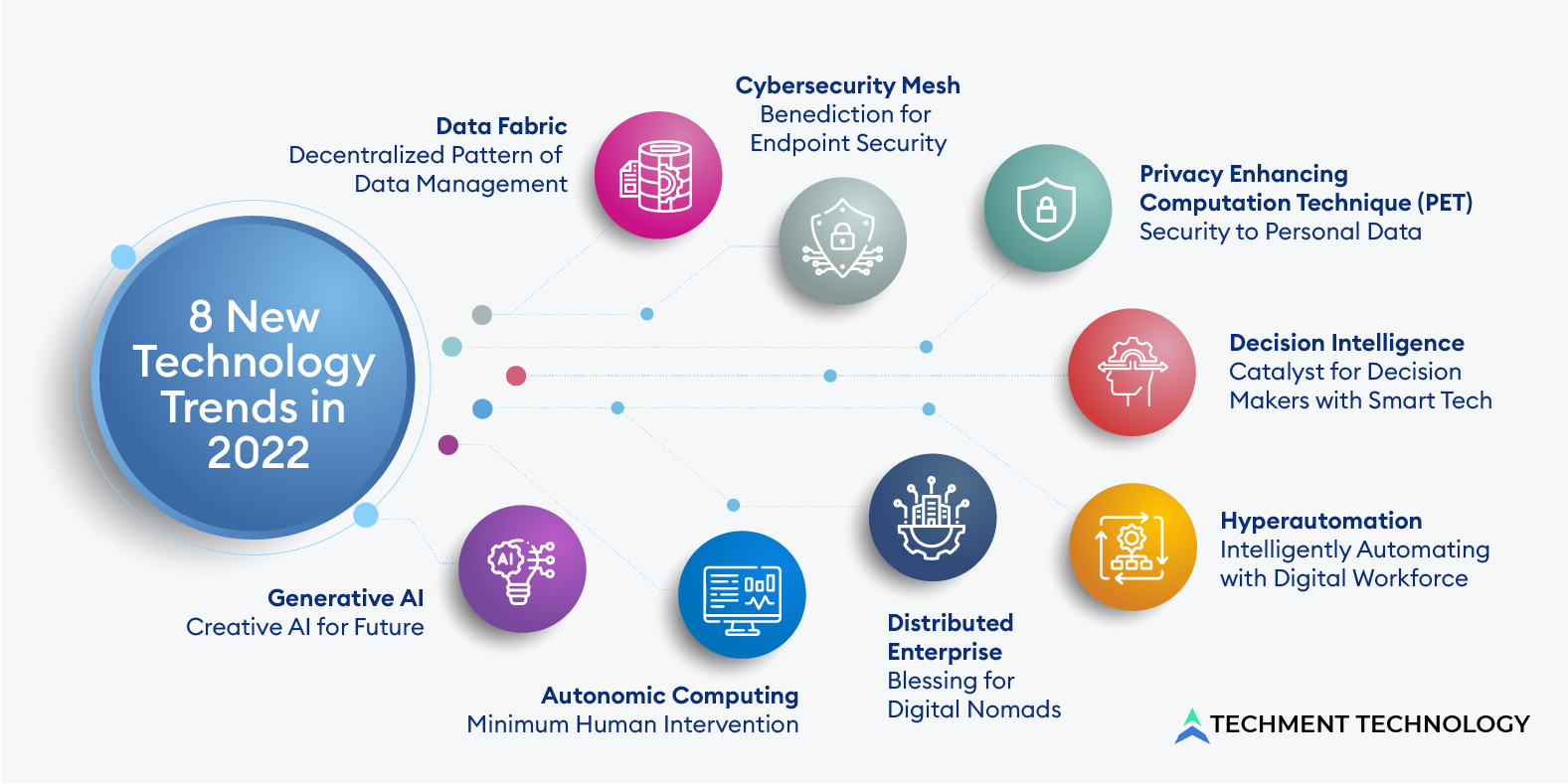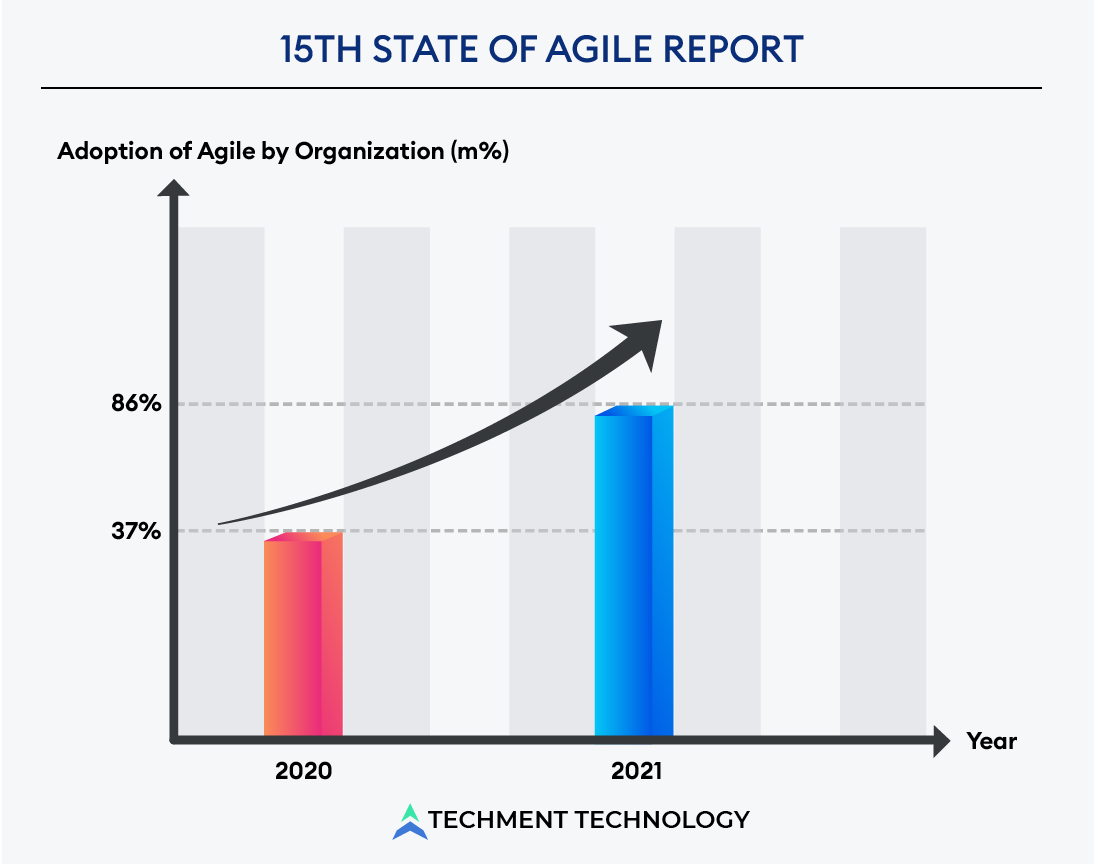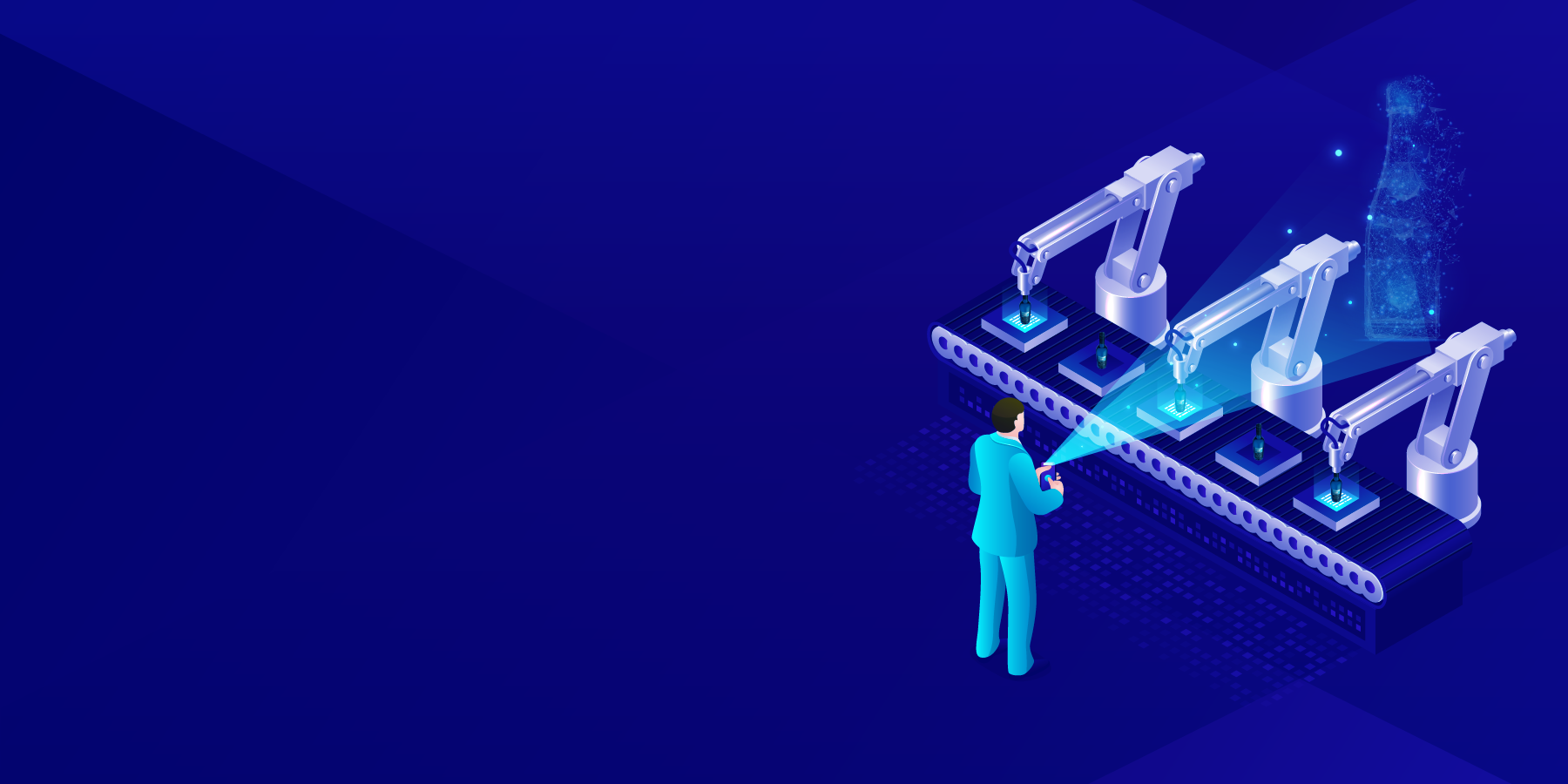Less Human Intervention to be New Digitalization
Experience of companies in technologies flashes the picture as to what will be required for sustainable business growth, and which technology trend would take the lead. This year saw the growth of technology trends that focused on user experience, remote technologies, and which enhanced employee experience. Data changed the behavior of companies based on predictions, automation surged and replaced humans in many aspects, and other technologies too, took different performance levels to improve digitalization. For 2022 and beyond, CTOs and IT executives in companies are looking for technologies that would be able to cope with uncertainty and require minimal human intervention for the next few years.
Digital disruptors win because they come out with solutions that are decisive, resilient, and agile to thrive in an uncertain environment. The year 2022 will necessitate smart technologies, especially for established incumbents, and they need to watch out for technology trends that will do more with less human intervention. For this, they need automation, outsourcing, decision-making, empowering data management, and other important steps to strengthen digitalization and undergo digital transformation. (Read this guide if you are CXO and get an insight about the imperatives of digital transformations)
8 Technology Trends to Accelerate Digitalization in 2022
Adoption of a digital-first approach has been a priority by CTOs and IT executives, and leveraging the new set of capabilities seems challenging. Future technology trends may or may not be new but discovering what lies underneath and uncovering those unseen capabilities needs to be handled. Some technology trends worth considering in 2022 are:

1. Data Fabric- Decentralized Pattern of Data Management: Data being a wealth of organizations, is becoming more complex, dispersed, and difficult to manage along with its growing demand. Enterprises juggle to maintain and bring it to one place because of siloed and point-to-point integration. This makes data management highly non-scalable. Data Fabric is the data management approach where it focuses on decentralization and globalization to act as a connection between data endpoints to address the challenges arising due to the hybrid data landscape.
This architecture will be in rage in 2022 and beyond as it enables the usage, discovery, governance, curation, and orchestration of data to full breadth, as it is built upon data distributed architecture and address the needs from rising diversity. According to the Allied Market Research report, the data fabric market size was valued at $812.6 million in 2018 and is projected to reach $4,546.9 million by 2026, growing at a CAGR of 23.8%.

2. Cybersecurity Mesh- Benediction for Endpoint Security: With pandemics affecting businesses in several ways, organizations also saw data breaches and ransomware attacks increase, and the workforce who are becoming more “digital nomads” is exposing the company data making it more vulnerable to attacks. For more reliable, scalable, and flexible cyber control, organizations will need to adopt a more modular approach that distributes enforcement of cyber security policies. Exploiting the entire network becomes difficult as this protects distributed access points.
“It is a complete perimeter security approach identified for the location-independent workforce.”
The cybersecurity mesh is also catching on with the deployment of microservice architecture as it adds efficiency and transparency to the process of this architecture and hardens the security when added with a zero-trust strategy. In the future, it would be interesting to see what organizational expansion would demand in security, and how it will deal with external threats, digital trust, and safety of the business.
3. Privacy Enhancing Computation Technique (PET)- Security to Personal Data: Data sharing in an untrusted environment suffers from personal data breaches especially cross-border transfers, processing, sharing, and analytics. Privacy enhancement computation technique applies to personal data protection in the above conditions and is now transforming from research to real-life applications. This technique protects data while it is used rather than while it’s static or in motion. This trend will leap as it benefits two or more organizations while they are sharing data that will limit the type of information either party can learn.
This technique will see a surge in next-gen digital advertising companies. Previously Facebook Inc., now Meta Platforms, Inc., have already taken a step by providing an open-source framework to developers where they can create privacy-centric measurement products that will make use of privacy enhancement measurement techniques.
4. Decision Intelligence- Catalyst for Decision Makers with Smart Tech: Organizations that miss the improved decision-making capabilities are trying to stay competitive with decision intelligence for better decision support, decision management, and complicated system applications. The Healthcare industry (Technology Trend 2021: Artificial Intelligence A Necessity In Healthcare), finance, supply chain, logistics, etc., are in urgent need of great decision-making for improved service. This decision intelligence works with a set of these technologies:
- Machine Learning (ML): Work with structured data to make suggestions. Anti-fraud systems used by banks are examples.
- Deep Learning (DL): For making new suggestions based on the outcome of ML.
- Visual Decision Modelling: To provide options to decision-makers with an option and show their outcomes.
- Predictive Analytics: To provide information on upcoming trends, especially seen in the retail industry.
5. Hyperautomation- Intelligently Automating with Digital Workforce: With the globalization of several businesses and IT processes, the extended automation beyond the confines of individual processes using artificial intelligence (AI) (From Bane To Benediction – Microservices And AI-Enabled Anomaly Detection) and robotic process automation (RPA), is known as hyperautomation. RPA enriched by AI and ML (Top 6 Robotic Process Automation (RPA) Trends For Successful Digital Transformation (DX)) can automate those processes where it was never done before.
Hyperautomation involves these processes:
- Robotic Process Automation (RPA)
- Analytics and Insights
- Intelligent Document Processing
- Intelligent Process Discovery
The above intelligent set of technologies or a team of software robots that undertake manual processes are known as Digital Workforce or Digital Workers, and the automation process is termed as Huperautomation or Digital Worker Automation.
Like in HR deployment, Dell was one of the first companies to implement RPA or hyperautomation through bots in HR and gained an efficiency of 85%. National Health Service (NHS), in England, implemented first a kind bot for 24/7 monitoring of crucial oxygen supply, and 1500 hours were shifted to value-added activities.
6. Distributed Enterprise- Blessing for Digital Nomads: These are those enterprises with different office locations or branches to grow the business. With distributed enterprise comes challenges like security risks as it is in a constant struggle of securing disparate locations. But incorporating the above-mentioned security policies and strategies would provide better security to distributed enterprises.
Cloud deployment comes into the picture when business becomes distributed, to provide access to resources for the better work performance of remote workers and digital nomads. This enhances the employee experience and reflects the digital-first business model.
7. Autonomic Computing- Minimum Human Intervention: Resembling with the autonomic human nervous system, autonomic computing addresses complexity by using technology to manage technology. With the digitalization of businesses, self-managing capabilities anticipate IT system requirements and resolve problems with minimum human intervention.
While enterprises are moving towards digitalization, they see future technology trends to be more self-reliant i.e., having capabilities like self-healing, self-configuring, self-optimizing, and self-protecting. With autonomic computing, enterprises would be able to increase the resiliency of systems, deliver a flexible business environment, provide standardized service, etc.
As these systems are more close to real-time to optimize their behavior in complex environments, they will be more preferred in these areas, in banking, to help mitigate the incidents of fraud, which would be seen in marketing, transportation, etc., in 2022 and beyond.
8. Generative AI- Creative AI for Future: AI has several use cases where it automates and simplifies mundane tasks, but the unheard capabilities of AI are yet to be discovered, and one such need for the year 2022 will be, awesome content generation to be done by generative AI in the form of image, video or any other format. This will use previous underlying patterns or data as input and generate creative content.
Digitalization has brought several trends in the previous decade, but change is constant even when it comes to the acceleration of digital capabilities and CTOs need to push mental capabilities to find which one will best resonate with sustainable business growth and build trust.
Conclusion: Technologies for Future Need to be More Self-Reliant
Keeping innovation at one side and business growth, profit margin, employee experience, customer experience, digitalization, transformation, etc., on another side, CTOs need to figure out what it takes to push the enterprise towards operational resilience and make the business sustain at the competitive edge. The most valuable asset at present and will be indispensable is data that will be based on all smart technologies, and losing control over it would cost a fortune to enterprises.
Business growth objectives and future technology trends must keep tight integration with market trends which may be simply adopting one technology or club different set of technology trends, else losing in competitive edge would not be difficult. Simply adopting technologies does not define the digital-first approach, unlike the past decade, now business leaders will have to bet on future technology which is more self-reliant in terms of working, optimizing, and healing.
Techment Technology is leading companies and partners to transform and manage their business by harnessing suitable technological solutions. With its 8 years of expertise, Techment is capable of addressing the company’s needs and syncing with fast-evolving tools and platforms. To join us on this journey do contact us.
 All Posts
All Posts


